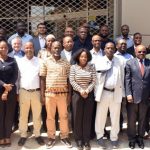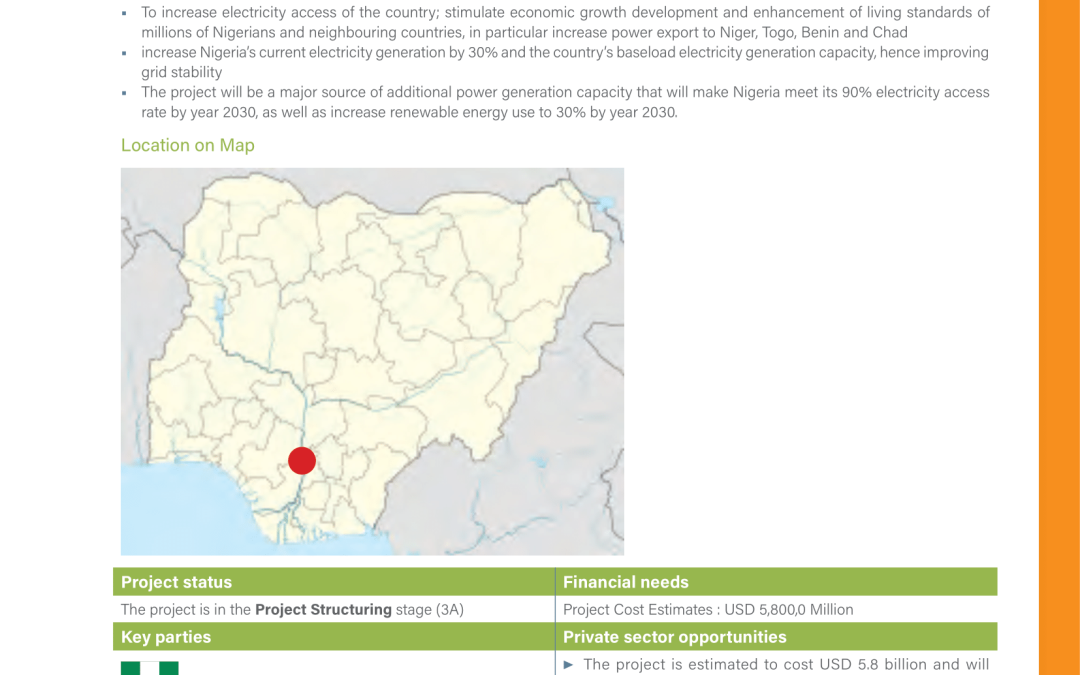
EN-NEPAD-PIDA-PAP2-Project-Prospectus-Web-1-92_45-45
Mambilla Power project is a 3.05GW hydroelectric facility being developed on the Dongo River near Baruf, in Kakara Village of Taraba
State, Nigeria. The project is being undertaken by Nigeria’s Federal Ministry of Power and is expected to go into full commercial
operation in 2030. When completed Mambilla will be Nigeria’s biggest power plant, producing approximately 5.457 billion kWh of
electricity a year. The project objectives are to:
• To increase electricity access of the country; stimulate economic growth development and enhancement of living standards of
millions of Nigerians and neighbouring countries, in particular increase power export to Niger, Togo, Benin and Chad
• increase Nigeria’s current electricity generation by 30% and the country’s baseload electricity generation capacity, hence improving
grid stability
• The project will be a major source of additional power generation capacity that will make Nigeria meet its 90% electricity access
rate by year 2030, as well as increase renewable energy use to 30% by year 2030.
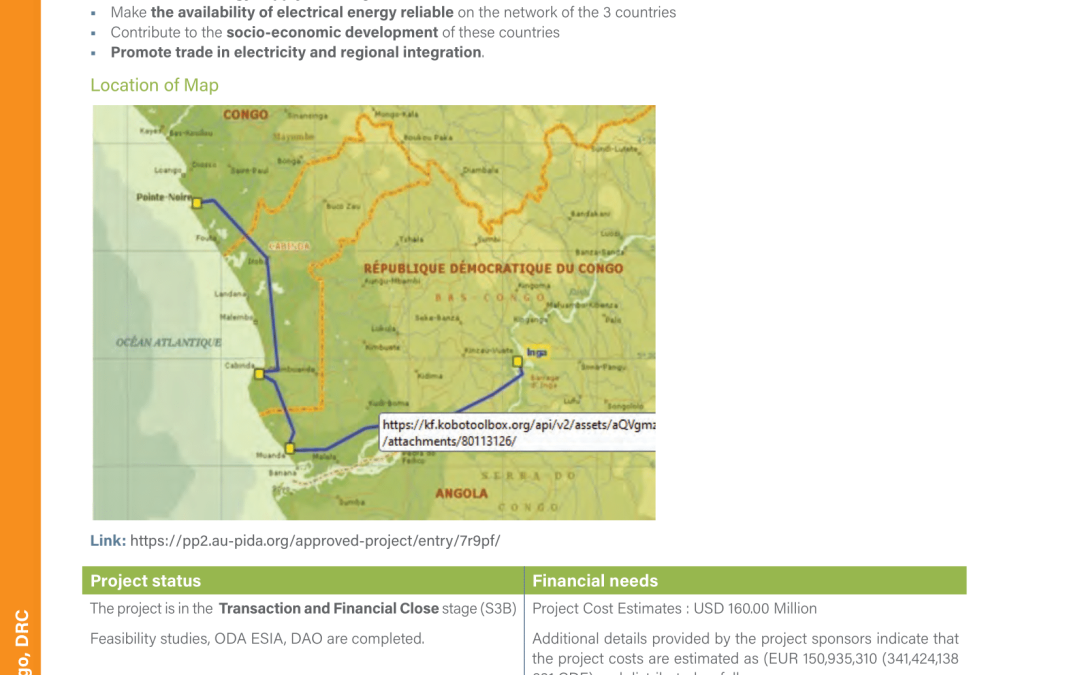
EN-NEPAD-PIDA-PAP2-Project-Prospectus-Web-1-92_44-44
Project aimed at securing the service to the cities of the Inga-Moanda-Boma-Cabinda-Pointe Noire-Brazzaville-Kinshasa-Inga loop and the ramp of the future backbone of the Corridor Maquela-Do Zombo-Inga-Cabinda-Pointe Noire-Gabon-Equatorial Guinea- Cameroon-Chad. The project objectives are to:
• Increase the energy supply in the region
• Make the availability of electrical energy reliable on the network of the 3 countries
• Contribute to the socio-economic development of these countries
• Promote trade in electricity and regional integratio
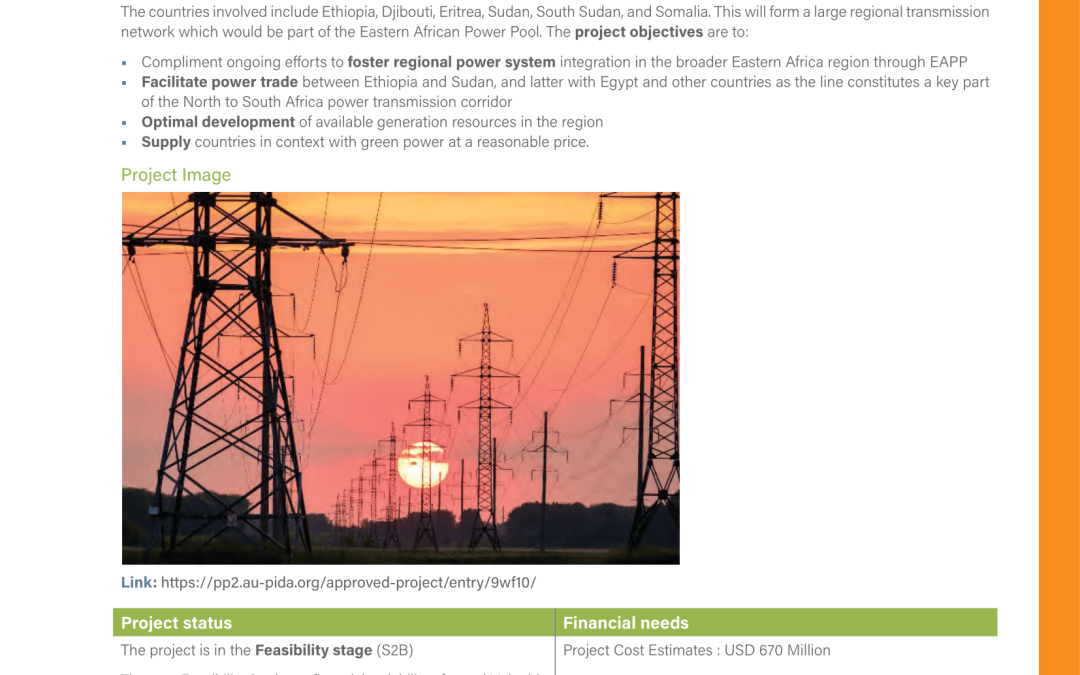
EN-NEPAD-PIDA-PAP2-Project-Prospectus-Web-1-92_43-43
The Guba (Ethiopia)-Khartoum (Sudan) project is one of the proposed cross power interconnectors between five countries in the Horn of Africa under the them ‘Eastern Africa Green Power Transmission Network Projects’ countries involved include Ethiopia, Djibouti, Eritrea, Sudan, South Sudan, and Somalia. This will form a large regional transmission network which would be part of the Eastern African Power Pool. The project objectives are to:
• Compliment ongoing efforts to foster regional power system integration in the broader Eastern Africa region through EAPP
• Facilitate power trade between Ethiopia and Sudan, and latter with Egypt and other countries as the line constitutes a key part
of the North to South Africa power transmission corridor
• Optimal development of available generation resources in the region
• Supply countries in context with green power at a reasonable price.
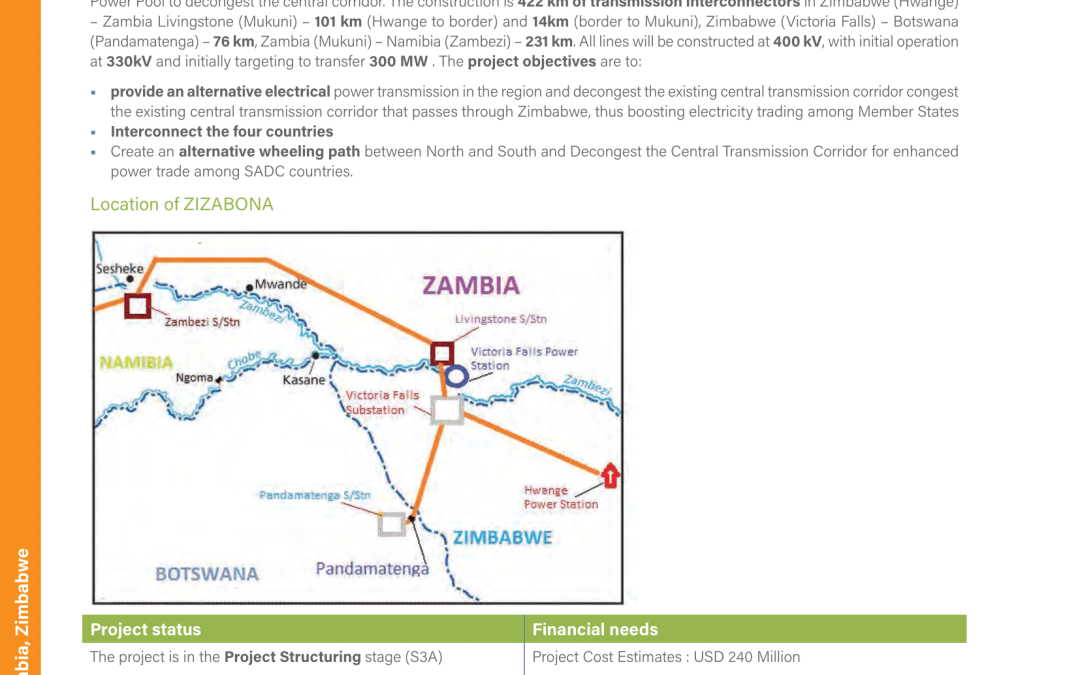
EN-NEPAD-PIDA-PAP2-Project-Prospectus-Web-1-92_42-42
The ZIZABONA transmission project consists of the development, financing, construction and operation of new transmission facilities in Zimbabwe, Zambia, Botswana and Namibia to facilitate the creation of a western transmission corridor in the Southern African Power Pool to decongest the central corridor. The construction is 422 km of transmission interconnectors in Zimbabwe (Hwange) – Zambia Livingstone (Mukuni) – 101 km (Hwange to border) and 14km (border to Mukuni), Zimbabwe (Victoria Falls) – Botswana (Pandamatenga) – 76 km, Zambia (Mukuni) – Namibia (Zambezi) – 231 km. All lines will be constructed at 400 kV, with initial operation at 330kV and initially targeting to transfer 300 MW . The project objectives are to:
• provide an alternative electrical power transmission in the region and decongest the existing central transmission corridor congest the existing central transmission corridor that passes through Zimbabwe, thus boosting electricity trading among Member States
• Interconnect the four countries
• Create an alternative wheeling path between North and South and Decongest the Central Transmission Corridor for enhanced power trade among SADC countries
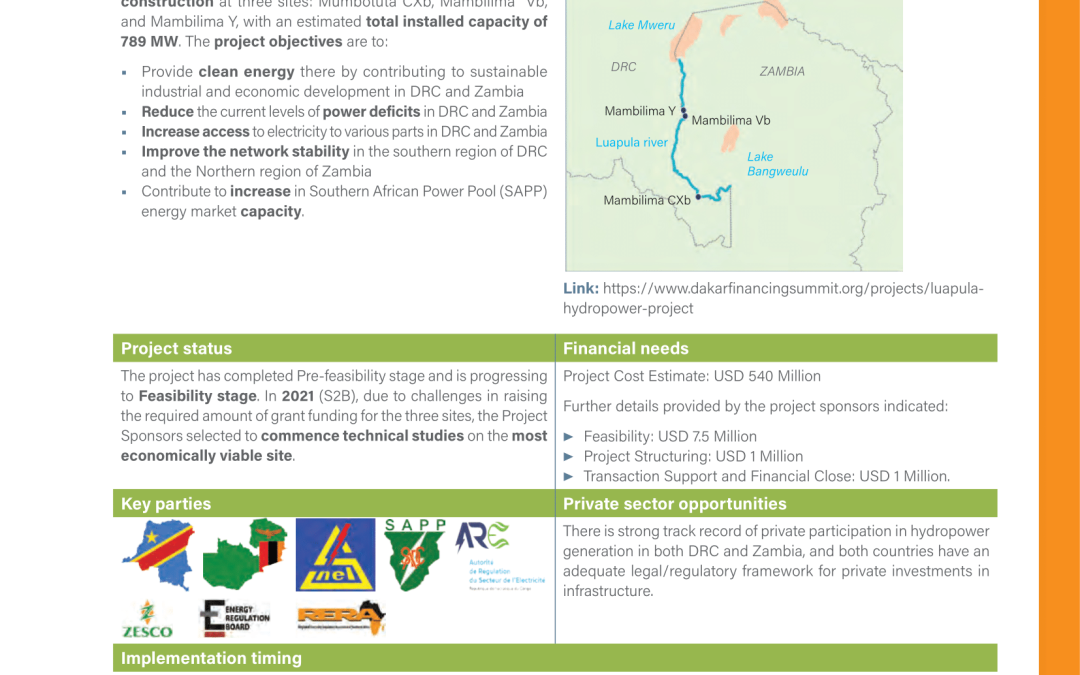
Download Prospectus
The Luapula Hydropower project is located on the Luapula river and consists of hydropower plants and transmission line construction at three sites: Mumbotuta CXb, Mambilima Vb, and Mambilima Y, with an estimated total installed capacity of 789 MW. The project objectives are to:
• Provide clean energy there by contributing to sustainable industrial and economic development in DRC and Zambia
• Reduce the current levels of power deficits in DRC and Zambia
• Increase access to electricity to various parts in DRC and Zambia
• Improve the network stability in the southern region of DRC and the Northern region of Zambia
• Contribute to increase in Southern African Power Pool (SAPP) energy market capacity






